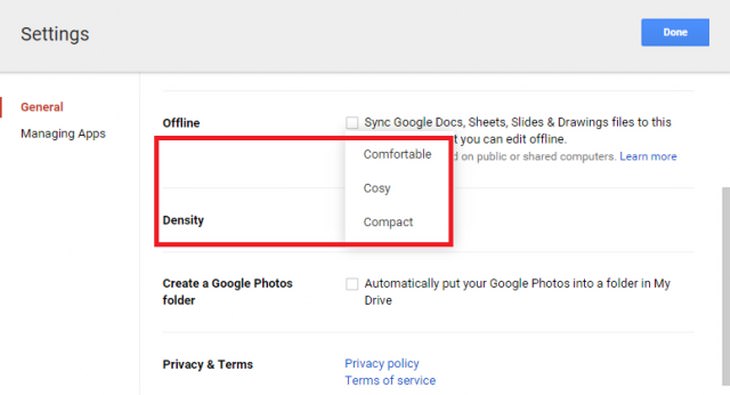
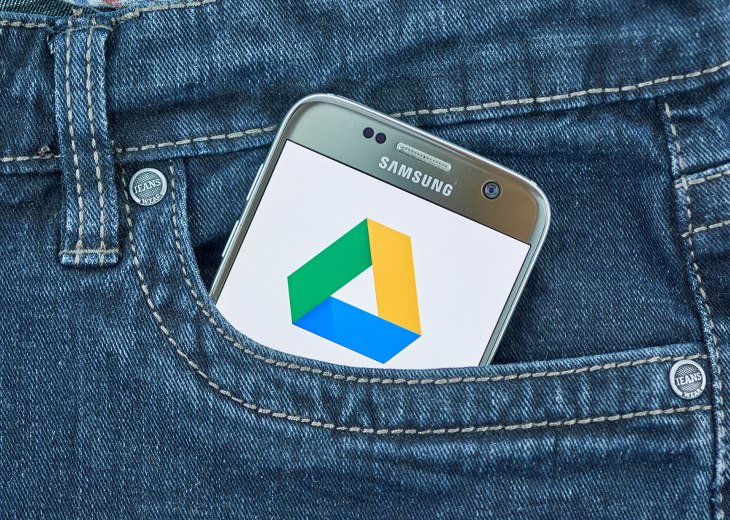
With Google Drive, you'll be able to store your files securely online, from where you can gain access to them from any PC or smartphone with an Internet connection from anywhere in the world. It also incorporates Google’s free office productivity suite - Google Slides, Google Sheets, and Google Docs.
Its major features are the ability to collaborate on documents in real-time, and the ability to share documents with non-Google Drive users. You can share files publicly (to anyone with a link) or privately (to specific users only). Collaborated documents are updated in a live manner, meaning that you can observe others making changes to uploaded documents while they work.
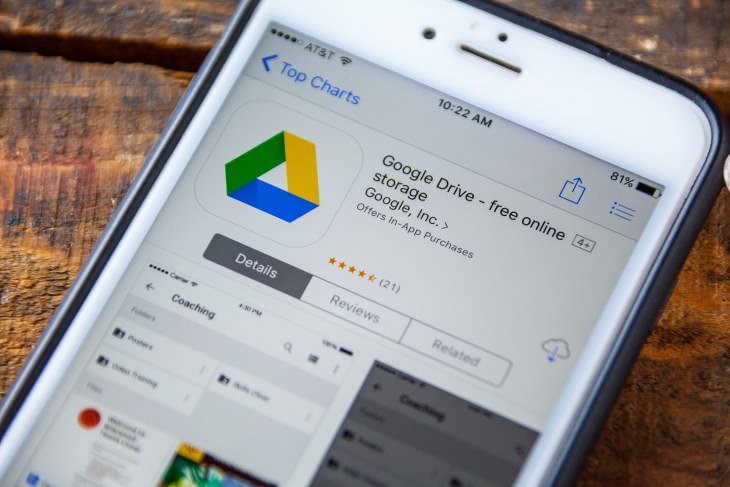
A huge range of file formats are supported, which you can view from the Google Drive viewer in both the web client and mobile app. These include all Microsoft Office file extensions, most typical image files (JPEG, PNG, GIF, TIFF, BMP, and WEBP), PDFs, audio files (MP3, MPEG, WAV), video files (MPEG4, 3GPP, MOV, AVI, MPEGPS, WMV, FLV, OGG, and WebM), Apple pages, Photoshop files, PostScript, AutoCAD extensions, and even many kinds of fonts. You can also upload unsupported file types, however, you won't be able to use them online. It's also important to note that there is a 5 TB limit on upload size.
The first 15GB of space is free for all users, however, if you want more space you'll need to pay for it. The cheapest plan costs $1.99 per month for 100 GB, while the most costly one will set you back $299.99 a month for 30 TB. However, Google often runs promotions, which allow users to gain access to additional storage space for free, so make sure that you watch out for them!
Google Drive has a Chrome app, a web-based client, mobile apps for iOS and Android, and downloadable synchronization folders for Windows and Apple’s OS X. It supports many 3rd-party apps that add additional features to the current offering. They have been available through the Chrome Web Store since launch, but you can now also get them through the web client itself.
We'd recommend simply going to drive.google.com/drive and following the onscreen instructions to set up your drive account.
If you'd rather use a folder on your desktop to synchronize your files with your Google account, then you'll need to download the software from within Google Drive. On Drive's homepage, simply click on 'Get Drive For PC' as shown here:
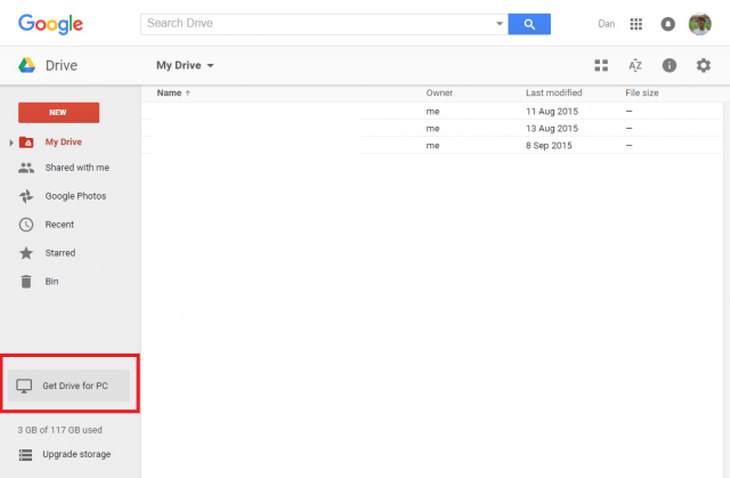
Once downloaded, a folder will be added to your user file and taskbar (on Windows) or Applications folder (on Mac). Enter the program's settings to choose which folders you want to sync, whether you want to service to automatically launch when you turn on your PC, and many other settings.
To sync your files to the online service, all you need to do is to drag any files you want to upload to your newly-created Google Drive folder, and everything else will be done automatically.
There are 2 ways to upload files and folders to Google Drive's web client.
The first way is to simply drag what you want to upload onto the Google Drive window, like this:
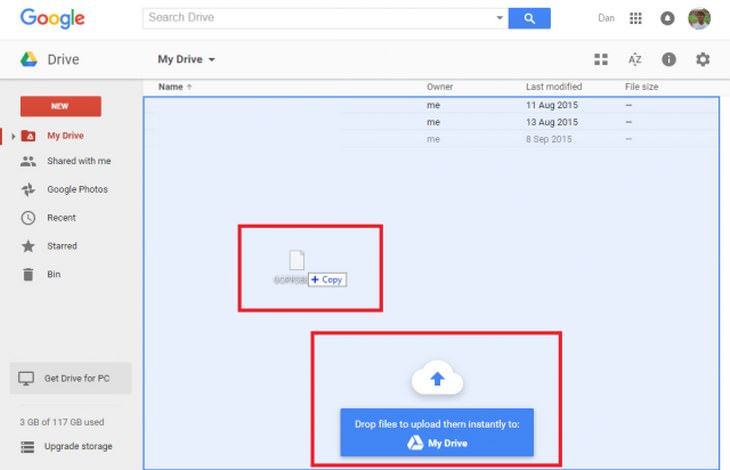
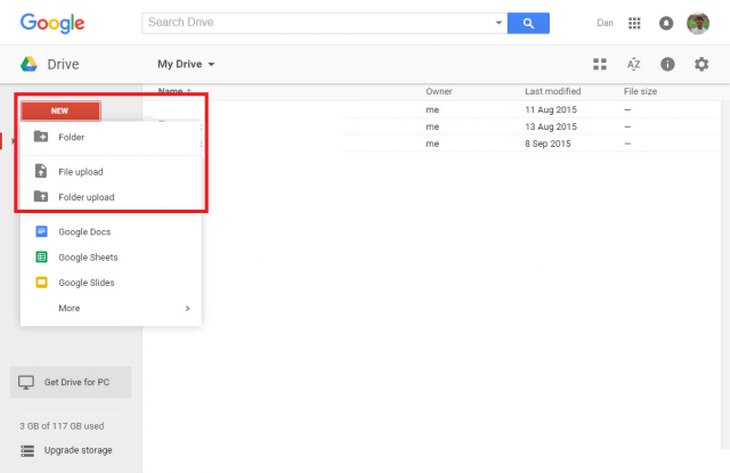

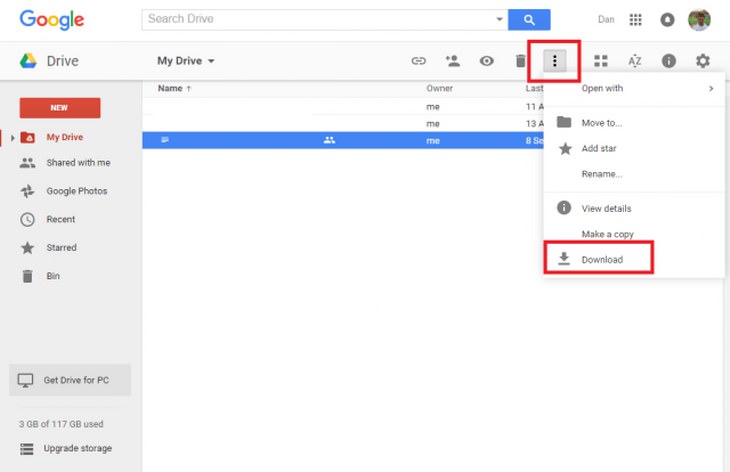
Google Drive doesn't support the uploading of files that are larger than 5 TB, but apart from that, there are also some other restrictions:
• Google Slides: 100 MB
• Google Sheets: 2,000,000 cells
• Google Docs: 50 MB or 1,024,000 characters
To create a new document, click on 'New' in the top-right corner, and choose the type of document that you want to start working on. A blank file will then be created for you.
You can rename your document, by clicking on 'Untitled Document', as shown here:
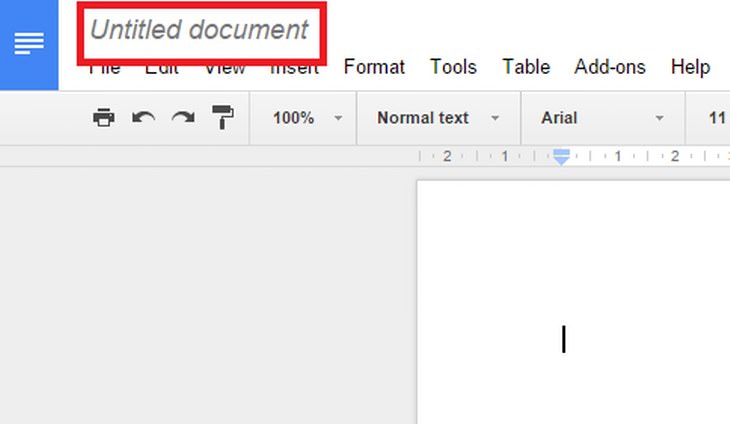
Any changes will be instantly saved as you go along, and your work will remain synchronized to your Google Drive account.
You may also create non-Google documents by clicking on 'More' and choosing a 3rd-party app that you've got installed. Any changes you make to the 3rd-party apps will be automatically saved and synced to your account.

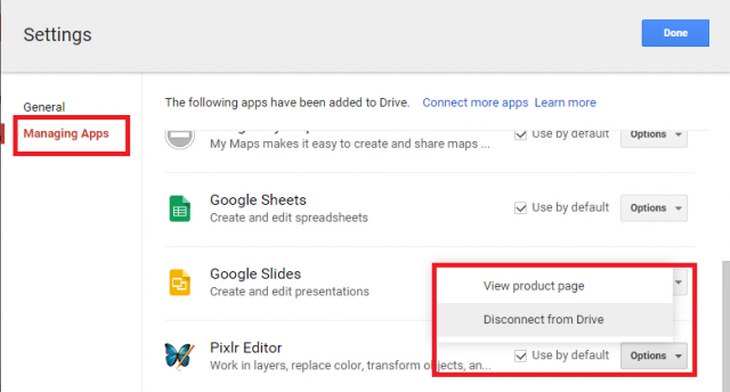
To share a file or folder with others, highlight the item in your Google Drive file list, and then right-click on it, and select 'Share'. You'll then be able to customize your share settings from the window that pops up. You can either enter the email addresses of the people you want to share it with, or else you can opt to get a 'sharable link' that you can send to others:
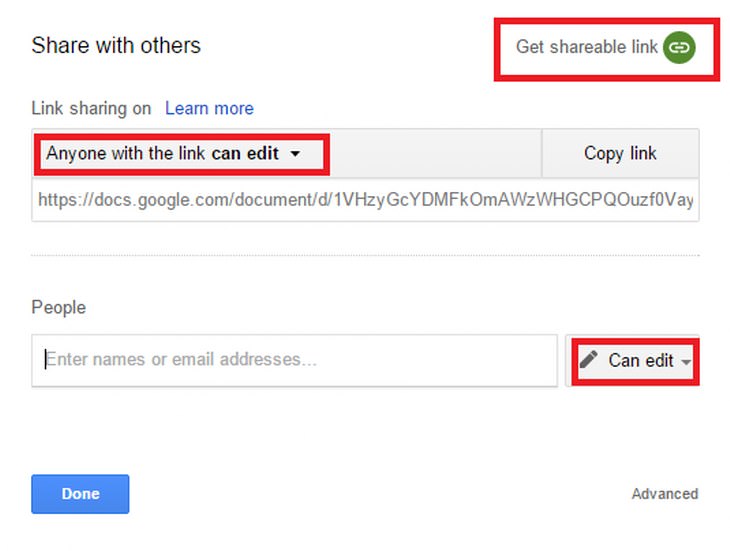
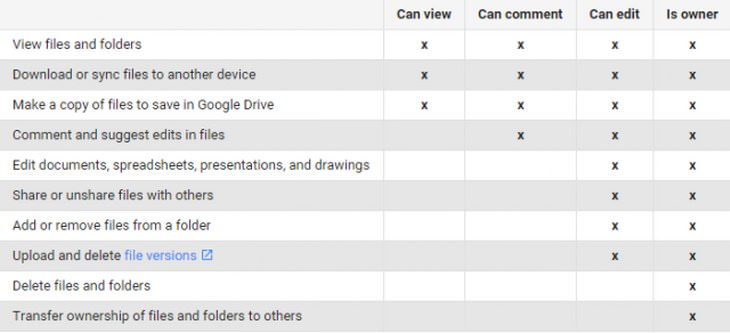
Clicking 'Advanced' in the bottom-right corner will present you with some more 'Owner Settings', which include the ability to prevent editors from changing other people’s privileges or adding new people to the share list, as well as preventing certain users from copying, printing or downloading your files.
To stop sharing a particular file, either click on the 'X' next to a person's name (if you shared it with certain individuals), or choose 'OFF' from the dropdown menu (if you made use of a shareable link).
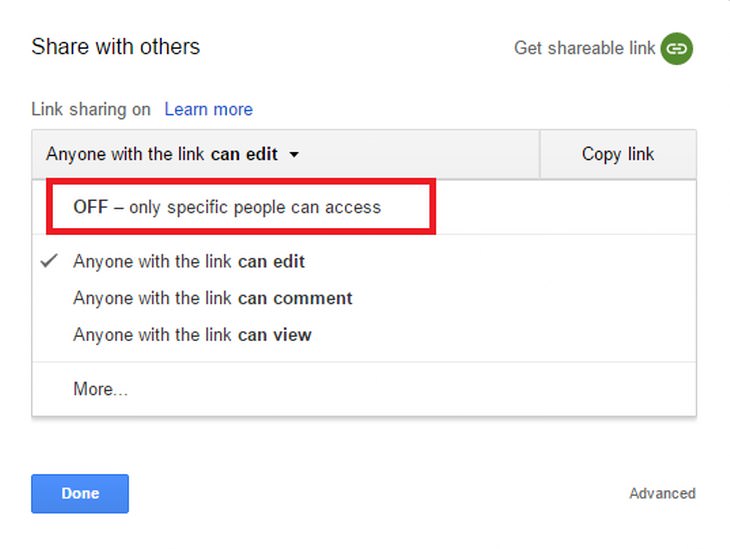
It's also good to know that if somebody has shared a file with you, then you'll be able to access it under the 'Shared with me' tab on the left-hand side of the page.
If somebody has editing privileges over your files, then they'll be able to automatically collaborate on the document with you in real-time. You'll be able to see any changes being made through the Google Drive interface. You will find the whole history of changes made to all files in your drive by clicking on 'Information' beside the settings cog. To see changes for a single file, make sure to highlight it before clicking on 'Information'.

To turn on offline access for your files, go to 'Settings', and make sure to tick the box next to 'Sync Google Docs, Sheets, Slides and Drawings files to this computer so that you can edit offline'.
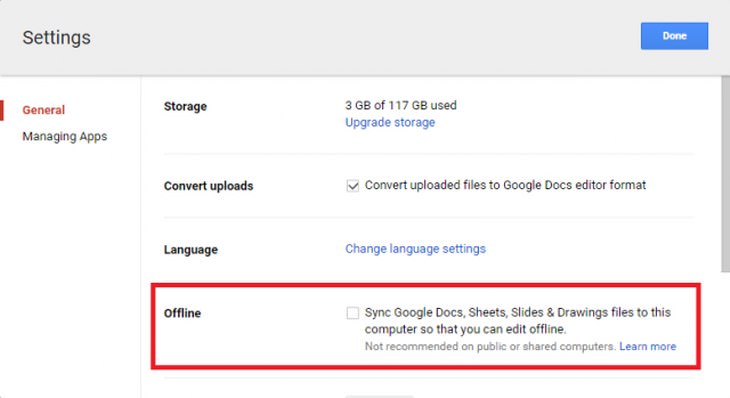
To keep your files secure, never tick this box if you are using a public or shared computer. To use this feature, you will either need to be using a Chromebook or a Chrome browser, since it will not work on non-Google browsers.
Once you've got this feature set up, any changes you make to your files and folders will automatically get synchronized and uploaded as soon as you connect to the internet.
It's important to note that when using your drive offline, you'll only be able to edit Google Sheets, Google Docs, Google Slides, and Google Drawings.
Your drive can be organized in a very similar way to how you would normally organize files and folders on your desktop. You can create a new folder by right-clicking on the main panel and selecting 'New Folder' or be going to New > Folder. Once created, you'll then be able to drag and drop files into it, as usual.
Important items can also be 'starred'. To star an item, simply highlight it and choose 'Add star' from the 'More actions' menu. Starred files can be found under 'Starred' on the left-hand side of the page.
There are two main visual layouts that you can choose from - grid or list. Select which one appeals to you most by clicking here:

You can also modify the way in which everything is sorted by clicking on the 'AZ' button. The options available are 'Name', 'Last opened by me', 'Last modified' and 'Last modified by me'.
You can also change how densely-packed everything onscreen appears. To do this, go to Gear > Settings, and then scroll down to 'Density'.
